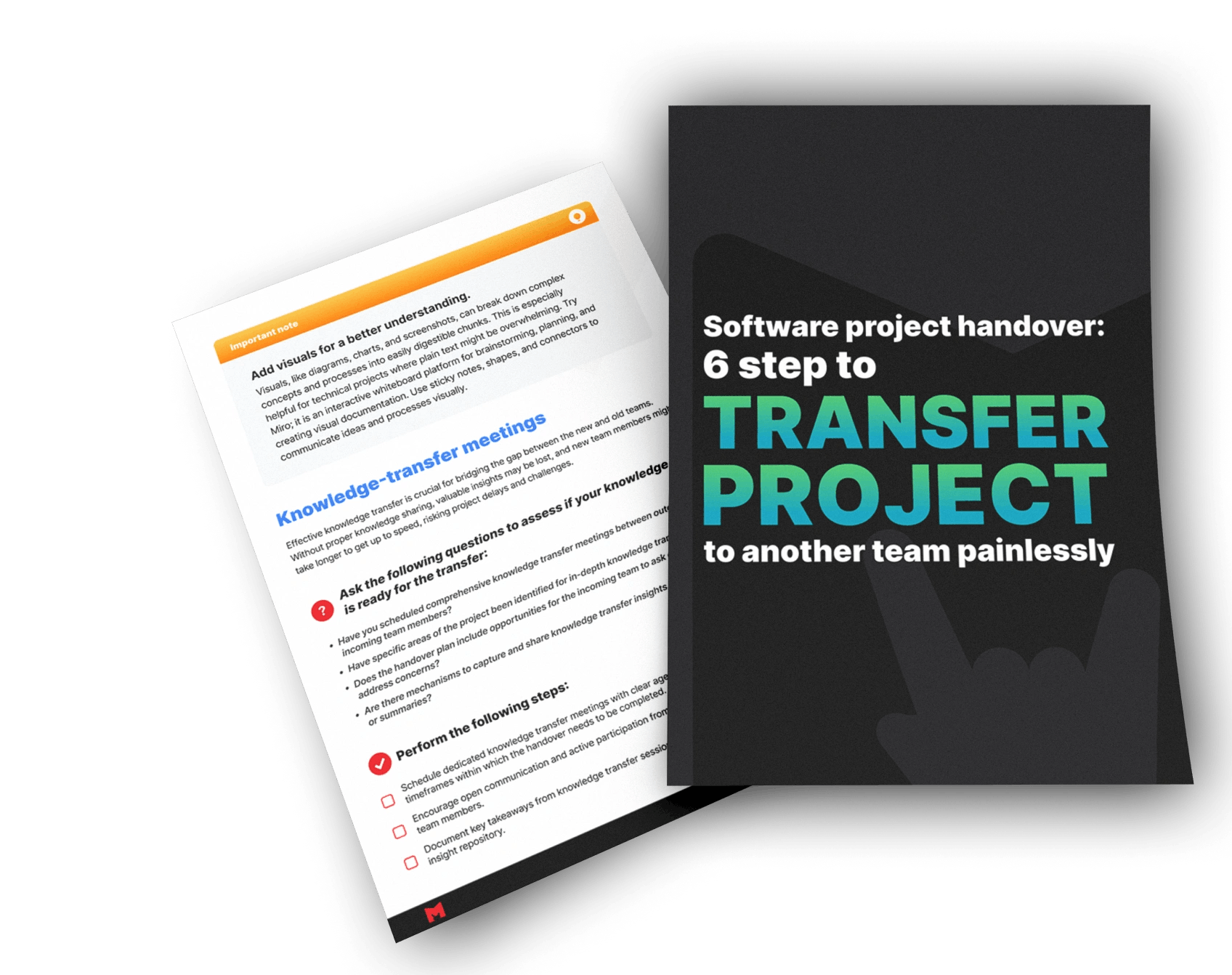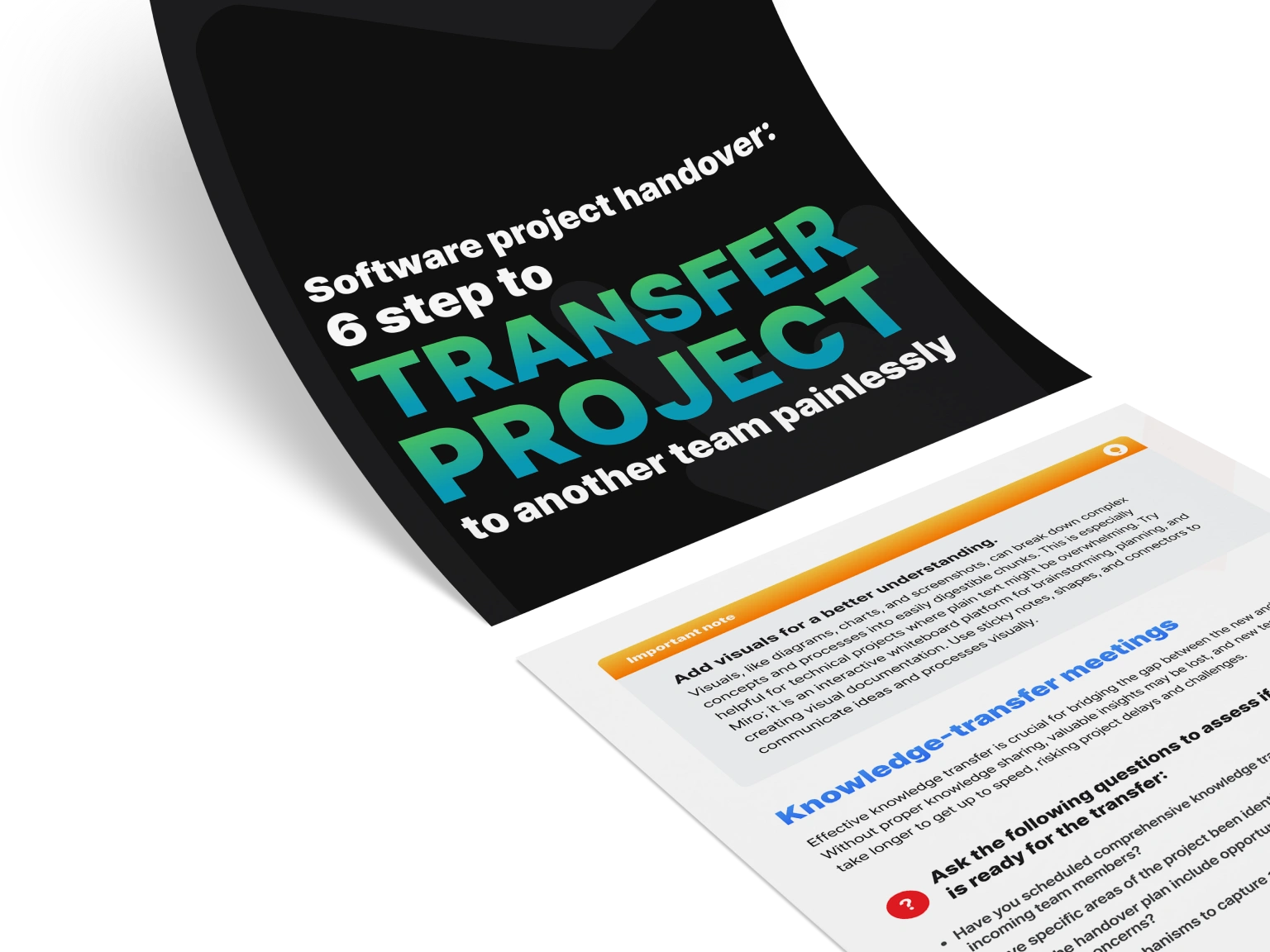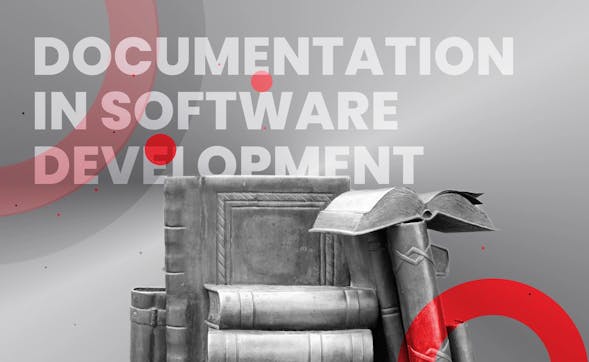
6 Steps to Transfer Project to Another Team Painlessly

Learn how to transfer a software project
By planning and keeping these key steps in mind, teams can ensure a smooth transition of responsibility from documentation to code, which needs to fit together seamlessly for a successful handover.
Documentation order and review
Learn how to ensure your project documentation is current, organized, and accessible for a seamless handover.
Knowledge-transfer meetings
Discover the importance of effective knowledge transfer meetings and how to schedule them with clear agendas and objectives.
Codebase evaluation and clarity
Understand the significance of codebase clarity and explore steps to assess documentation, create visual representations, and utilize code comments.
Setup and environment
Explore the main points to document detailed setup instructions, share access securely, and establish a knowledge base for smooth environment transitions.
Testing for a seamless transition
Learn about the importance of comprehensive test cases, bug-reporting processes, and clean tests for project stability.
Post-handover support
Discover the key elements of post-handover support, including establishing mechanisms, scheduling follow-up meetings, and monitoring project performance.






